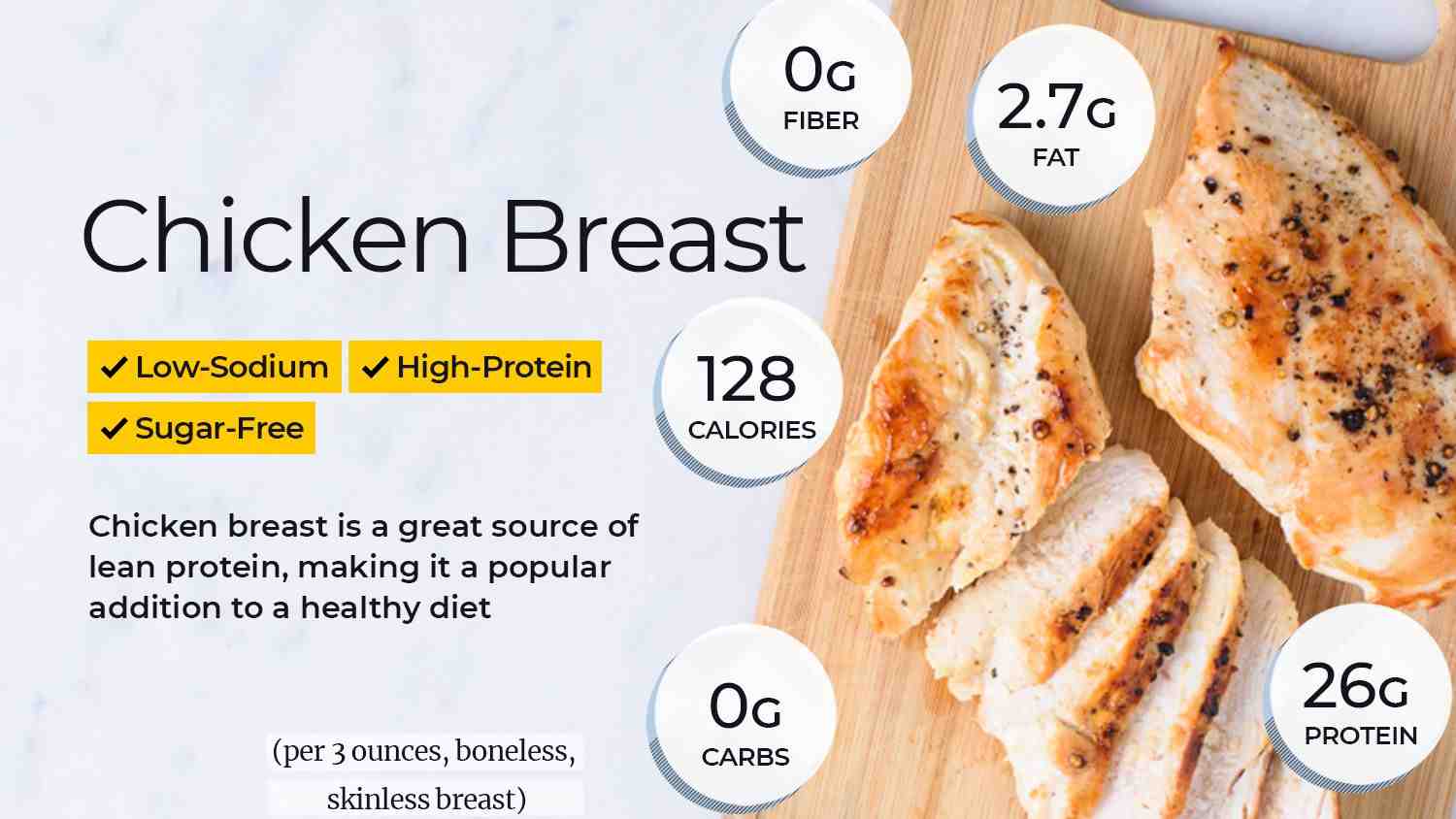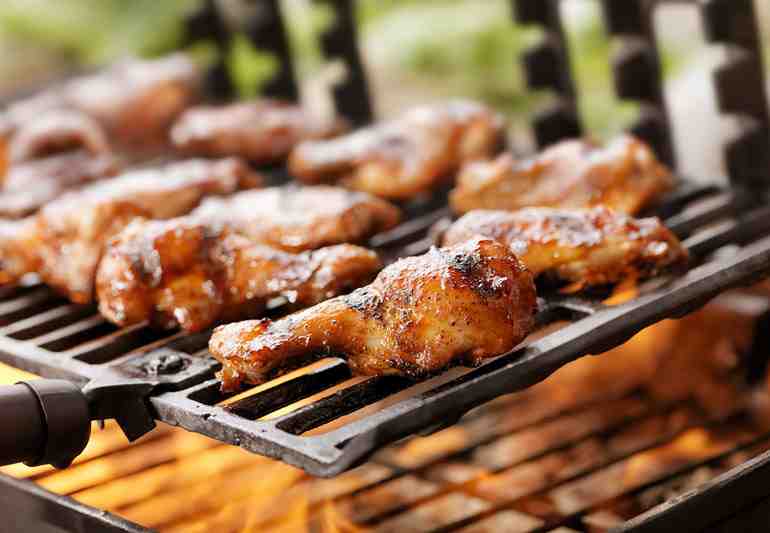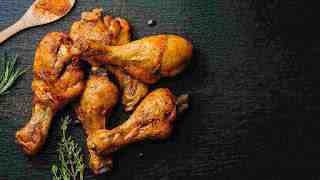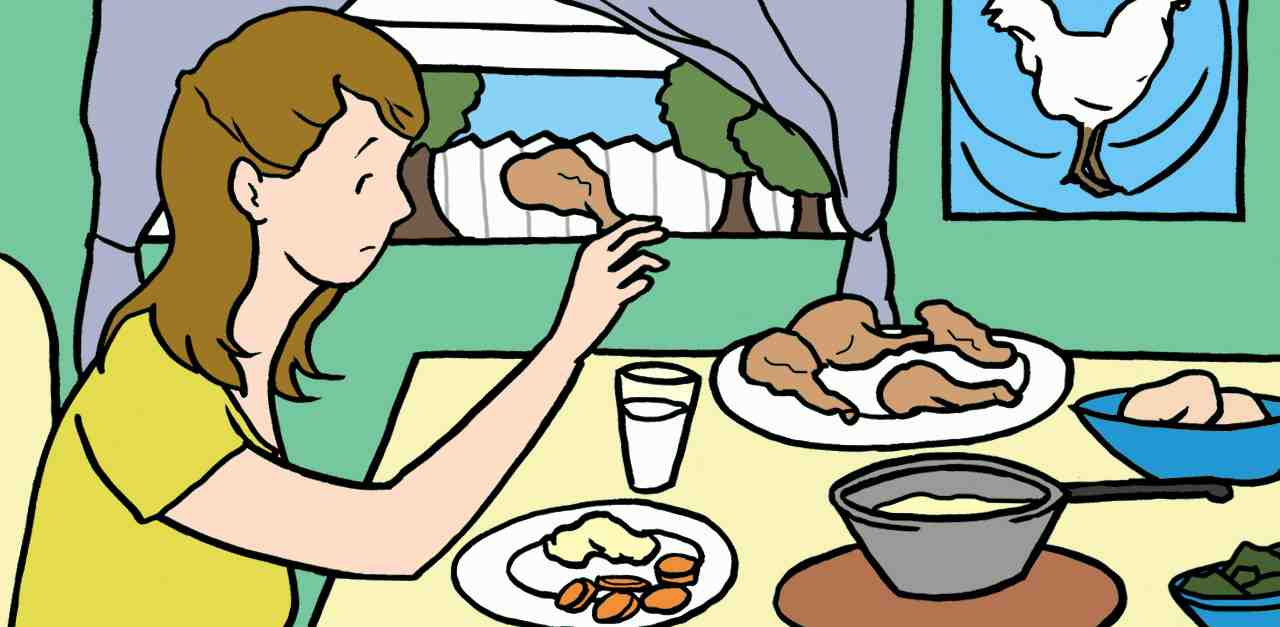Is eating chicken breast daily good?

Eating chicken breast every day is not the key to weight loss. This may interest you : Can cheese be good for you?. Chicken breast, however, is low in calories and high in protein and can support your weight loss efforts when paired with a balanced, low-calorie diet.
How many chicken breasts should I eat per day? The 2020-2025 Dietary Guidelines for Americans (DGA) Healthy U.S.-Style Eating Pattern recommends the average person eat 26 ounces of poultry (including chicken) per week. Per day, that would be roughly equivalent to eating 3.5 ounces of chicken breast.
Is it OK to eat chicken every day?
Eating chicken every day isn’t bad, but you have to be careful when choosing the right one and cooking it properly. On the same subject : Is turkey bacon better for you?. Chicken can cause food poisoning due to salmonella, a bacteria found in poultry chicken that can cause foodborne illness.
Is it OK to eat chicken often?
Bottom Line: No, eating chicken for multiple meals throughout the week hasn’t been proven to hurt you, but a low-variety diet might. Foods provide fewer and fewer different nutrients, so it’s important to mix them up no matter what you’re eating.
What happens if you eat only chicken everyday?
You will build muscle. Chicken is a complete protein rich in leucine, an amino acid that plays a major role in muscle protein synthesis by stimulating protein-building pathways, according to a study published in The Journal of Nutrition.
Is it healthy to eat a lot of chicken breast?
Bottom Line: No, eating chicken for multiple meals throughout the week hasn’t been proven to hurt you, but a low-variety diet might. This may interest you : What’s the safest food to eat?. Foods provide fewer and fewer different nutrients, so it’s important to mix them up no matter what you’re eating.
What happens if you eat chicken breast everyday?
In addition to helping you build muscle mass, eating chicken every day can preserve and protect your overall muscle health, as noted by Mazzuco. “Chicken breast is also a good source of leucine, which is vital for muscle growth, muscle repair, and improving endurance and strength,” she continued.
What happens if you eat chicken everyday?
You will build muscle. Chicken is a complete protein rich in leucine, an amino acid that plays a major role in muscle protein synthesis by stimulating protein-building pathways, according to a study published in The Journal of Nutrition.
Is 200g of chicken too much?
Not enough: Less than 200 g per day 200 g of chicken provide your recommended daily intake (RDA) of protein: 0.8 g per kg of body weight. Read also : Is 2 chicken breasts a day too much?. “If you’re even slightly lacking in protein, you can’t build muscle tissue.” says sports nutritionist Matt Lovell (fourweekfatloss.com).
Can I eat 200g of chicken a day? Chicken also contains good vitamins and minerals, including calcium, magnesium, iron, phosphorus, potassium, zinc, sodium, and vitamin D. How much can you eat? The average person can eat 200g of chicken a day and be fine. It is recommended that a person eat.
How many grams of chicken should I eat per meal?
Chicken can be a great addition to a balanced diet. Stick to about 3 to 4 ounces (85 to 113 grams) per serving, which is about the size of a deck of cards. Read also : What is the safest meat to eat?. Also, be sure to choose healthy cooking methods like baking, grilling, sautéing, or steaming whenever possible.
Is 200g of chicken too much?
Not enough: Less than 200 g per day 200 g of chicken provide your recommended daily intake (RDA) of protein: 0.8 g per kg of body weight. “If you’re even slightly lacking in protein, you can’t build muscle tissue,” says sports nutritionist Matt Lovell (fourweekfatloss.com).
How many grams of chicken is a portion size?
A standard serving is (500–600kJ): 65g cooked lean red meat such as beef, lamb, veal, pork, goat or kangaroo (about 90-100g raw) 80g cooked lean poultry such as chicken or turkey (100g raw) 100g cooked fish fillet (about 115g raw) or a small can of fish.
How many grams of chicken is a good portion?
Another Serving Suggestion Here’s another way to look at your chicken portions – 3 ounces is about 85 grams. While this may not be how most Americans think of weighing their food, it allows you to use USDA weight estimates for typical chicken cuts.
How much chicken is a healthy portion?
Chicken Breast The recommended portion of chicken is 3 to 4 ounces, or about the size of a deck of playing cards. Some people use the palm of their hand as a guide. Depending on the vendor, some chicken breasts are twice or even three times the recommended serving size.
How many grams of chicken should I eat a day?
How many grams of chicken should I eat per day? Chicken can be a delicious addition to a healthy diet when prepared correctly. Maintain a serving size of about 3 to 4 ounces (85 to 113 grams) per serving, which is about the size of a deck of cards.
What is the symptoms of too much protein?

Protein buildup in the kidneys creates a much more acidic environment in the kidneys, causing you to urinate all the time. The increased acid production can also cause bone and liver problems. Side effects start with mild dehydration, but can lead to the development of kidney stones, which are extremely painful.
What disease is caused by too much protein? Insight. Amyloidosis is a condition in which too much of a particular protein (amyloid) accumulates in the organs, so that they are unable to function normally. Amyloidosis can affect the heart, kidneys, liver, spleen, nervous system, stomach or intestines.
What happens when you eat too much protein?
Excess protein consumed is usually stored as fat, while excess amino acids are excreted. This can lead to weight gain over time, especially if you consume too many calories while trying to increase your protein intake.
Does eating more protein make you skinny?
Getting enough protein in your diet is very important. A high protein intake can provide many benefits, including helping you lose weight, gain muscle, and improve your body composition and metabolic health.
How can I eat more protein with less calories?
Here are some of the best low-calorie, high-protein vegetables and meats:
- Tuna. Seafood is an excellent source of dietary protein as it is one of the best low calorie options. …
- Turkey. …
- Cottage cheese (or Paneer)…
- Eggs. …
- Spinach. …
- Salmon. …
- Lenses. …
- Peas.
Can I eat too much chicken?

Bottom Line: No, eating chicken for multiple meals during the week hasn’t been proven to hurt you, but a low-variety diet might. Foods provide fewer and fewer different nutrients, so it’s important to mix them up no matter what you’re eating.
Is it okay to eat chicken every day? Excess of anything is bad and the same rule applies to chicken. Eating chicken every day isn’t bad, but you have to be careful when choosing the right one and cooking it properly. Chicken can cause food poisoning due to salmonella, a bacteria found in poultry chicken that can cause foodborne illness.
How much chicken is too much a day?
Too much: More than 550g per day “It is essential not to neglect other sources of protein such as fish, eggs and lean red meat, which provide useful amounts of iron, good for the immune system, and B12, important for energy metabolism. says NHS dietitian Tracy Purbrick.
What happens if you eat chicken everyday?
You can build muscle if you eat chicken every day “Eating chicken breasts every day is great for building muscle,” she told The List. “It’s lean and one of the best sources of protein.” Additionally, chicken breasts are quite easy to prepare and are widely available in grocery stores at a reasonable price.
What happens if you eat too much chicken meat?
It’s true, it is possible to eat too much chicken. And the consequences can be quite alarming – it can increase your risk of heart disease, it can make it harder to maintain a healthy body weight, and it can even make you more resistant to antibiotics.
What are the disadvantages of eating too much chicken?
Side effects of eating chicken, according to science
- It can raise your cholesterol levels.
- The majority of chicken breasts sold at retail are contaminated with bacteria.
- This can lead to weight gain.
- Chicken with antibiotics has been linked to UTIs.
How much chicken meat is too much?
Lean protein is healthy, right? Not if you eat too much. If you eat a whole chicken breast for dinner, you may be eating too much. The recommended single serving of chicken is 3 to 4 ounces, or about the size of a deck of playing cards.
What happens when you only eat chicken and vegetables?

A diet of vegetables and chicken can lead to weight loss, as long as you keep your portion sizes moderate. However, you are likely to run into compliance issues because such a boring diet is hard to sustain in the long run. In the most basic equation, eating fewer calories than you burn leads to weight loss.
What will happen if I only eat chicken and broccoli? Does the Chicken Breast and Broccoli Diet Work? With this diet, your caloric intake is very low, which leads to weight loss in almost everyone who follows this type of diet. However, many people will notice that they are losing water weight due to a lack of calories rather than losing fat mass.
What is it called when you just eat chicken and vegetables?
Also known as pollo-vegetarian, the pollotarian diet is considered a type of semi-vegetarianism because some forms of animal meat are allowed. While the prefix “pollo” literally translates to “chicken” in Spanish, pollotarians typically eat all forms of poultry, including turkey and duck.
How often do Flexitarians eat meat?
How often do flexitarians eat meat? There is no set amount of meat a flexitarian can eat, it mostly depends on the individual. However, in Dawn Jackson Blatner’s book, she suggests up to 28 ounces of lean meat per week as the maximum intake. Or, even better: three ounces of lean meat three times a week.
What can Flexitarians eat?
Foods to Eat on the Flexitarian Diet
- Fruits.
- Vegetables.
- Vegetable proteins (beans such as black, red or navy, edamame, chickpeas, lentils, tofu).
- Whole grains (brown rice, oats, barley, quinoa).
- Vegetable milk (although cow’s milk is acceptable in moderation).
- Eggs.
- Dairy products (cheese, yogurt or dairy alternatives).
Will I lose weight only eating chicken?
BOTTOM LINE: While some people claim the chicken diet can promote rapid weight loss, the research doesn’t back it up. Plus, it’s unhealthy, unsustainable, and likely to lead to long-term nutritional deficiencies.
Can you lose weight by just eating chicken breast?
Point. Eating chicken breast every day is not the key to weight loss. Chicken breast, however, is low in calories and high in protein and can support your weight loss efforts when paired with a balanced, low-calorie diet.
Does chicken make you lose belly fat?
Chicken. “Chicken provides 25 grams of protein per three ounces, which helps keep you full,” Amidor says. “That’s why it’s been touted as a fat-burning food. Chicken is absolutely a healthy food to choose, especially if you’re trying to lose weight.
Will I lose weight if I eat only meat and vegetables?
Depending on your calorie intake and exercise routine, you may be able to safely lose 8-10 pounds in a month by eating only meat, vegetables, and fruits.
Can you lose weight just eating protein and vegetables?
You can lose weight on a high protein diet. Choose lean meats and dairy products for your protein. Find a plan that includes vegetables, so you don’t lack fiber and other important nutrients.
What diet is only meat and vegetables?
Unlike keto, which limits carbs to a certain number per day, the carnivore diet aims for zero carbs per day. You only eat meat, fish, eggs and certain animal products; you exclude all other food groups, including vegetables, fruits, grains, legumes, nuts and seeds.
Sources :
